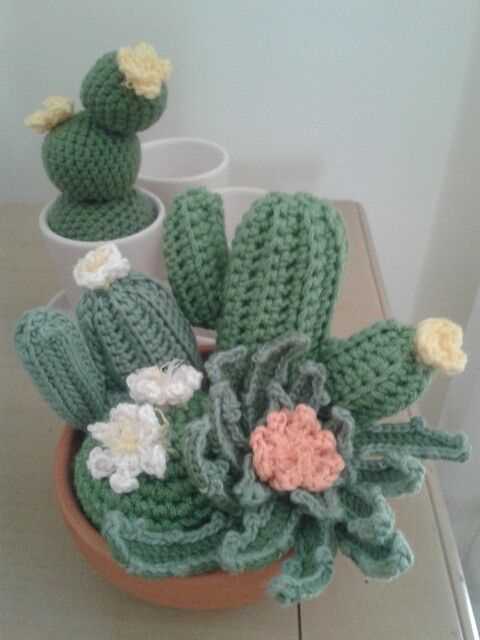
If you’re a fan of succulents and love to knit, then this succulent knitting pattern is perfect for you! Succulents are popular houseplants because of their unique and beautiful shape, and now you can bring that beauty into your knitting projects. This pattern allows you to create your own adorable knitted succulents that will never need watering!
The succulent knitting pattern is suitable for knitters of all levels, from beginners to advanced. The pattern includes step-by-step instructions and detailed photos to help guide you through the process. It’s a fun and relaxing project that you can do in your spare time, and the finished result makes a great decoration or gift for any plant lover.
To create your knitted succulent, you’ll need a few basic knitting supplies, such as knitting needles, yarn, and stuffing. The pattern uses simple knitting techniques like knit and purl stitches, so even if you’re a beginner, you’ll be able to follow along and create your own beautiful succulent. The pattern also includes instructions for different succulent varieties, so you can create a collection of unique and colorful plants.
So, if you’re ready to add a touch of nature to your knitting projects, grab your knitting needles and get started on this succulent knitting pattern. You’ll be amazed at how realistic and cute your knitted succulents turn out, and you’ll be proud to display them in your home or give them as handmade gifts to your friends and family.
Succulent Knitting Pattern
If you’re a fan of succulents and knitting, why not combine two of your passions and create your own succulent-inspired knitting patterns? Succulents are known for their unique shapes and textures, making them the perfect inspiration for creative knitting projects.
One popular succulent knitting pattern is the cactus. With its spiky appearance, knitting a cactus can be a fun challenge. You can experiment with different shades of green yarn to create a realistic look, or get creative with bold colors for a more whimsical cactus. Adding small details like flowers or miniature pots can also enhance the overall design.
Materials:
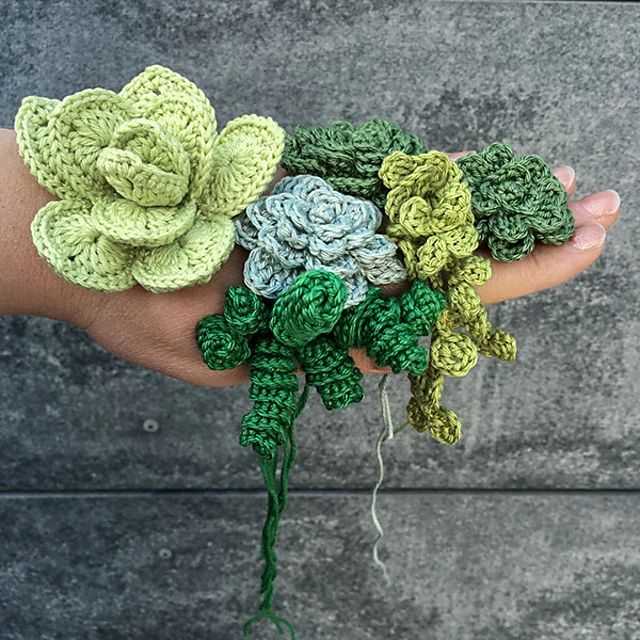
- Green yarn (various shades)
- Knitting needles (appropriate size for your chosen yarn)
- Stuffing or yarn scraps for filling
- Optional: Embroidery floss or yarn for details
Instructions:
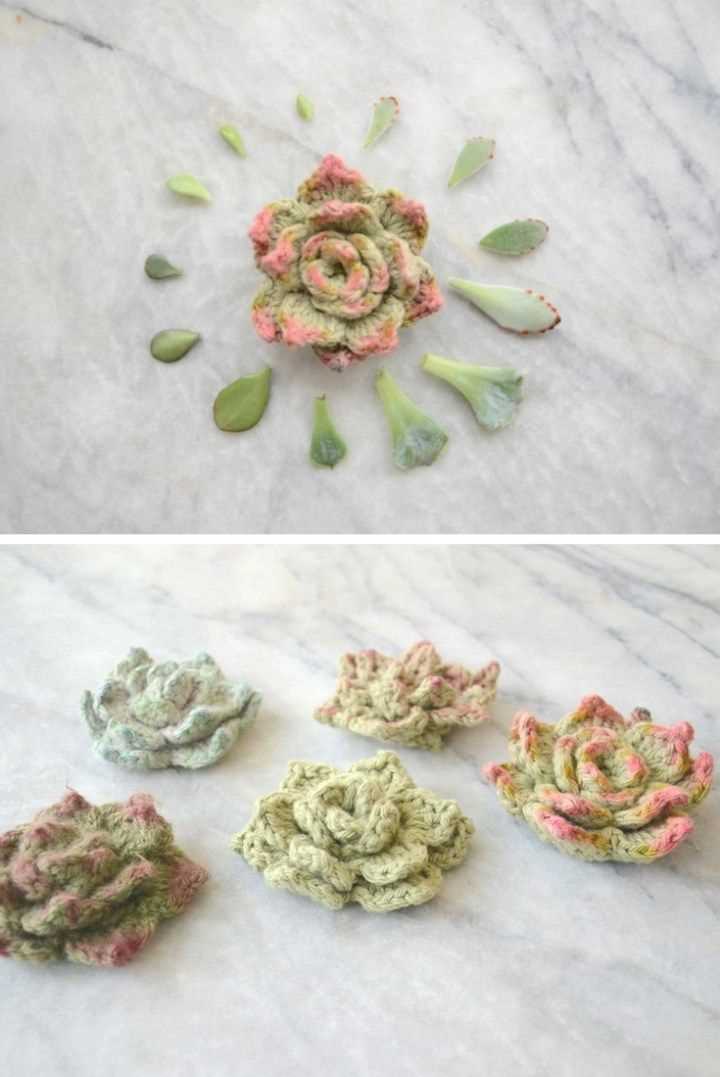
- Cast on the desired number of stitches for the base of your cactus.
- Knit in the round or flat, depending on your preference, using your chosen stitch pattern.
- Continue knitting until your cactus reaches the desired height.
- Decrease stitches gradually to shape the top of the cactus.
- Bind off and weave in any loose ends.
- Optional: Add embroidery or small embellishments to create details like flowers or spines.
- Fill the cactus with stuffing or yarn scraps to give it a three-dimensional shape.
- Enjoy your adorable knitted succulent!
Once you master the basic cactus pattern, you can take your succulent knitting skills to the next level by creating other types of succulents, such as aloe vera or echeveria. The possibilities are endless, and you can use your creativity to design unique patterns that reflect your favorite succulent varieties.
Choosing the Right Yarn for Your Succulent Knitting
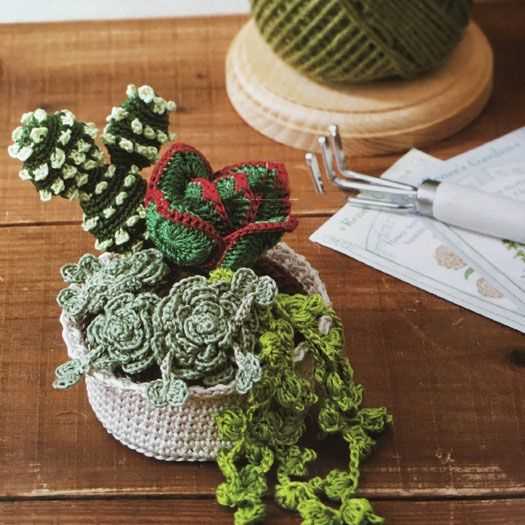
When it comes to knitting succulents, choosing the right yarn is crucial to achieving the desired look and feel of your finished project. There are several factors to consider when selecting yarn, including texture, weight, and color.
Texture: Succulents have a unique and distinct texture, characterized by their thick and fleshy leaves. Therefore, it is important to choose a yarn that can imitate this texture. Look for yarns with a smooth but slightly bulky feel, as this will best mimic the look of succulent leaves.
Weight: The weight of your yarn will determine the overall size and shape of your knitted succulent. For smaller, more delicate succulents, opt for a lightweight yarn such as lace or fingering weight. If you want to create larger, more substantial succulents, choose a heavier weight yarn such as worsted or bulky.
Color: Succulents come in a wide range of colors, from vibrant greens to muted pastels. Consider the color palette you want to achieve and select yarns that match or complement these colors. Variegated yarns can also add depth and dimension to your knitted succulents.
Suggested Yarns: Some yarns that are popular for succulent knitting include cotton, bamboo, and acrylic blends. These yarns offer the right balance of texture and durability needed for knitting lifelike succulents. It is also important to choose yarns that are easily washable, as succulents may accumulate dust over time.
In conclusion, choosing the right yarn for your succulent knitting project is essential for achieving realistic and visually appealing results. Consider the texture, weight, and color of the yarn, and opt for yarns that imitate the characteristics of succulent leaves. With the right yarn choice, you can create stunning knitted succulents that will bring a touch of nature to your home or make unique gifts for others.
Essential Knitting Techniques for Succulent Patterns
When it comes to creating beautiful succulent patterns in knitting, there are a few essential techniques that every knitter should have in their repertoire. These techniques will help you achieve realistic textures and shapes for your succulent designs, allowing you to create unique and eye-catching projects.
1. Cabling
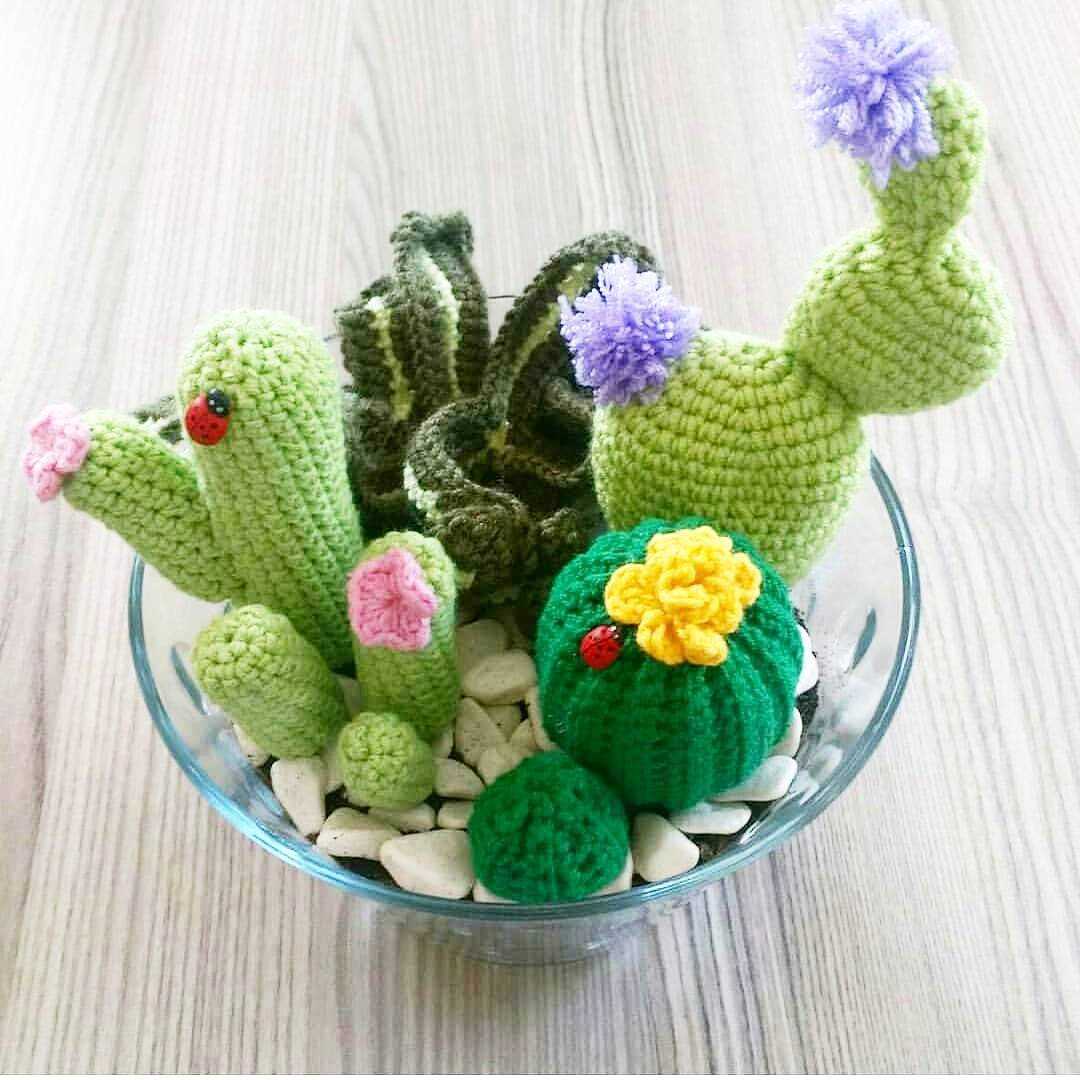
Cabling is an important technique for adding texture and dimension to your succulent patterns. By crossing stitches over each other, you can create the appearance of leaves or petals. Experiment with different cable patterns to achieve different looks for your succulents.
2. Lace knitting
Lace knitting is another technique that can be used to create intricate and delicate succulent patterns. By combining yarn overs and decreases, you can create the appearance of openwork or lace-like leaves. Lace knitting can produce a lightweight and airy look for your succulents.
3. Shaping techniques
Proper shaping techniques are crucial for creating realistic succulent shapes. Increasing and decreasing stitches in specific ways can help you achieve the desired shape and form for your succulent patterns. Pay attention to the pattern instructions and use the appropriate shaping techniques for each project.
4. Colorwork
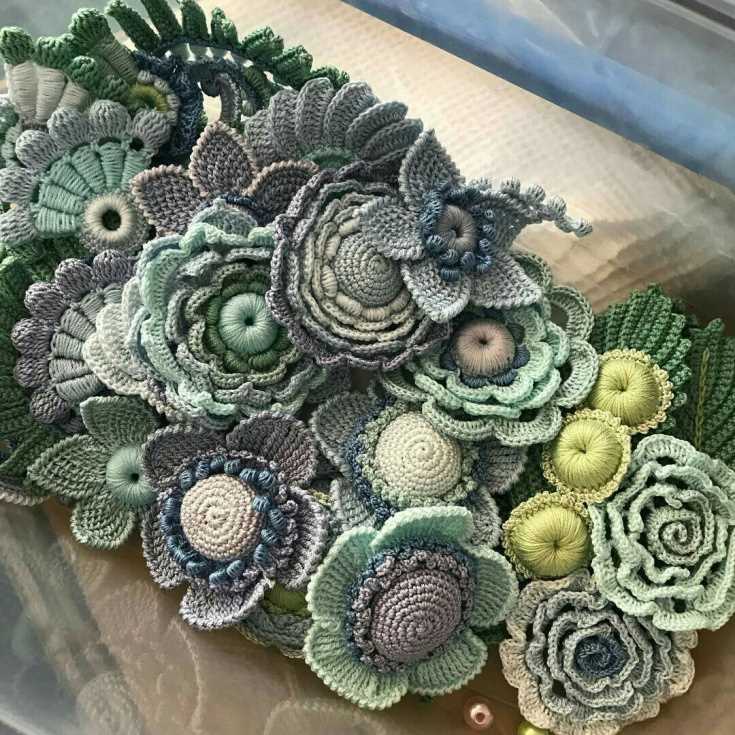
Colorwork can add depth and interest to your succulent designs. Experiment with different color combinations to achieve the look of various succulent varieties. Fair Isle and intarsia are two popular colorwork techniques in knitting that can be used effectively for succulent patterns.
By mastering these essential knitting techniques, you’ll be able to create stunning and lifelike succulent designs. Whether you’re knitting a cactus-shaped toy or a succulent-inspired scarf, these techniques will elevate your knitting projects and make them truly unique.
Basic Succulent Knitting Pattern
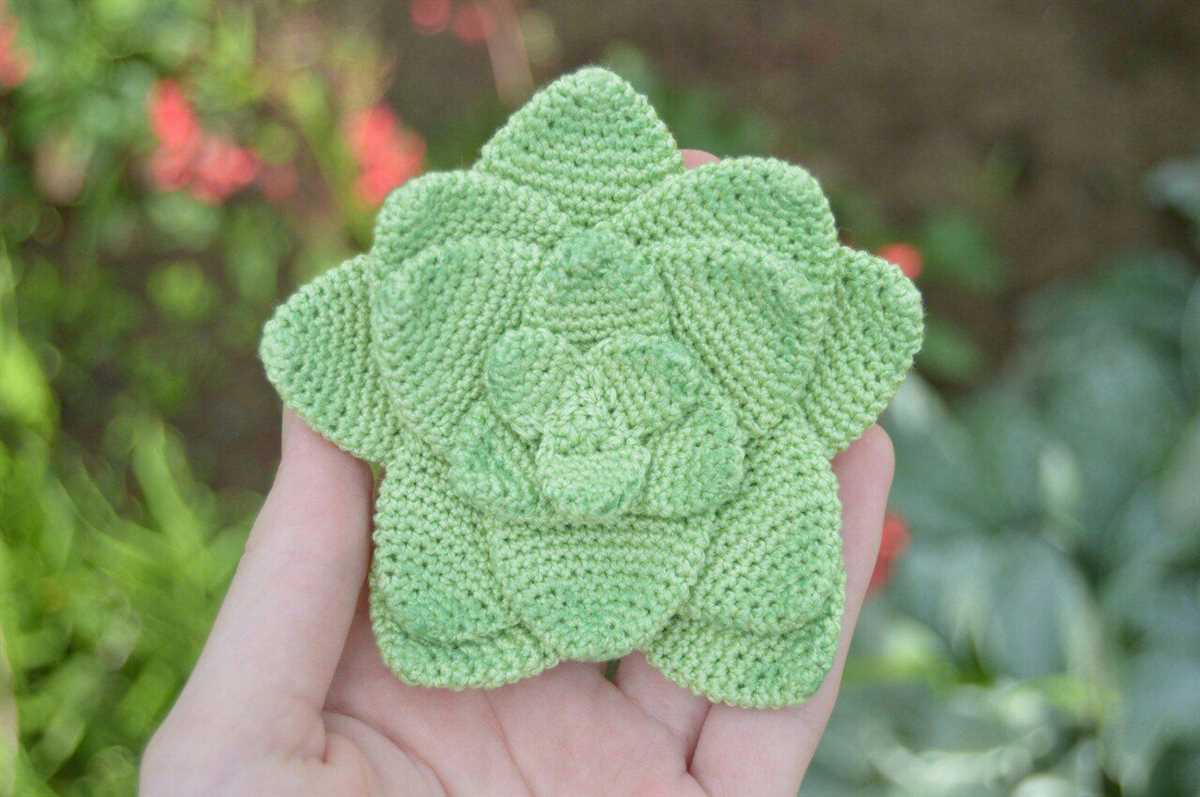
Succulents are beautiful and low-maintenance plants that bring a touch of greenery to any space. If you love succulents but want to try your hand at a different kind of greenery, why not give succulent knitting a try? With this basic succulent knitting pattern, you can create your own cute and cozy succulent that will never wilt or need watering.
To get started, you will need some basic knitting supplies, including yarn in green and other colors for the leaves, knitting needles, a yarn needle, and stuffing. You can choose any type of yarn you like, but chunky or worsted weight yarn works best for this project.
Materials:
- Green yarn
- Yarn in various colors for leaves
- Knitting needles
- Yarn needle
- Stuffing
Once you have gathered your materials, you can start knitting your succulent. Begin by casting on a few stitches with the green yarn to create the base of your plant. Then, switch to a different color yarn to knit the leaves. You can choose any leaf pattern you like, or even experiment with different stitch patterns to create unique and textured leaves.
Continue knitting the leaves until you are satisfied with the size and shape of your succulent. Then, switch back to the green yarn and knit a few more rows to create the stem. Finally, cast off and weave in any loose ends.
Once your knitting is complete, it’s time to stuff your succulent. Use the yarn needle to carefully stuff the leaves and stem with the stuffing, making sure to distribute it evenly. Once the succulent is stuffed to your liking, use the yarn needle to sew up the bottom of the base to secure the stuffing.
And there you have it – your very own knitted succulent! This basic pattern is a great starting point, but feel free to get creative and experiment with different colors, sizes, and leaf patterns to create a whole collection of adorable knitted succulents. Happy knitting!
Intermediate Succulent Knitting Patterns
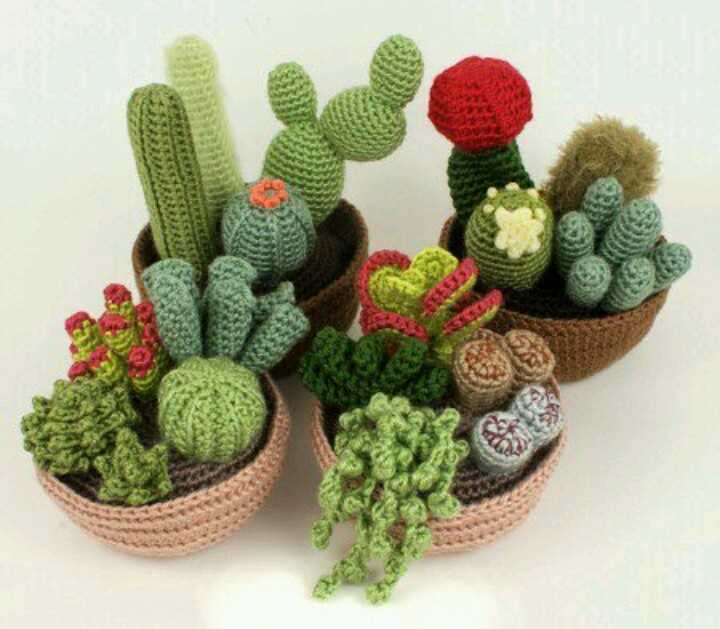
If you are an experienced knitter looking for a new project, intermediate succulent knitting patterns offer a great opportunity to challenge your skills and create unique and playful designs. These patterns are perfect for those who have mastered the basics of knitting and are ready to take on more complex techniques.
1. Cactus Tea Cozy
If you enjoy knitting home accessories, the cactus tea cozy pattern is an excellent choice. This intermediate-level pattern allows you to create a cozy cover for your teapot, shaped like a charming cactus. You can experiment with different stitch patterns to add texture and create lifelike ridges and spikes. This pattern is a fun way to showcase your knitting skills while adding a touch of whimsy to your home decor.
2. Succulent Mittens
For those looking to knit a fashion accessory, succulent mittens are an exciting project. These mittens feature a pattern inspired by succulent plants, with intricate details and rich textures. The pattern uses colorwork, cables, and lace techniques to create a unique and eye-catching design. Knitting these mittens will not only keep your hands warm but also showcase your knitting expertise.
3. Cactus Throw Pillow
If you want to add a touch of nature to your living space, the cactus throw pillow pattern is an ideal choice. This intermediate-level pattern allows you to knit a cozy and decorative pillow cover featuring a cactus design. You can play with different yarn colors and stitch patterns to capture the vibrant and varied textures of various succulent plants. Knitting this throw pillow will not only bring charm to your home decor but also provide a cozy place to rest.
4. Succulent Shawl
A succulent shawl is a versatile accessory that can be both stylish and practical. This intermediate pattern allows you to knit a beautiful shawl inspired by the unique shapes and colors of succulent plants. The pattern includes lace and texture techniques, resulting in a delicate and intricate design. This shawl is perfect for wrapping around your shoulders on chilly evenings or enhancing your outfit with a touch of handmade elegance.
5. Cactus Baby Blanket
For those looking to knit a gift for a little one, a cactus baby blanket pattern is a delightful choice. This intermediate-level pattern allows you to create a soft and cozy blanket featuring a cactus motif. You can experiment with different yarn textures and colors to make the cactus design pop. This blanket will not only provide warmth but also become a cherished keepsake for the baby and their parents.
Advanced Succulent Knitting Patterns
For knitting enthusiasts who have mastered the basics of succulent knitting patterns, it’s time to take your skills to the next level with advanced designs. These patterns offer intricate details and unique techniques that will challenge and inspire you to create stunning succulent-themed knitted pieces.
1. Lace Succulent Shawl
One popular advanced pattern is the Lace Succulent Shawl. This pattern features a delicate lace design that mimics the intricate leaves of a succulent. With intricate lace stitches and careful attention to detail, this pattern creates a beautiful shawl that is perfect for special occasions or as a statement piece. The pattern includes complex stitch combinations and chart reading skills to create the intricate lace design.
2. Cabled Succulent Socks
Another advanced pattern option is the Cabled Succulent Socks. These socks feature a cable stitch pattern that creates a textured succulent design. With twisted stitches and intricate cable crosses, these socks are a challenging project that will impress any knitting enthusiast. The pattern includes detailed instructions and charts to guide you through the complex cable stitches and create a pair of stunning succulent socks.
3. Colorwork Succulent Sweater
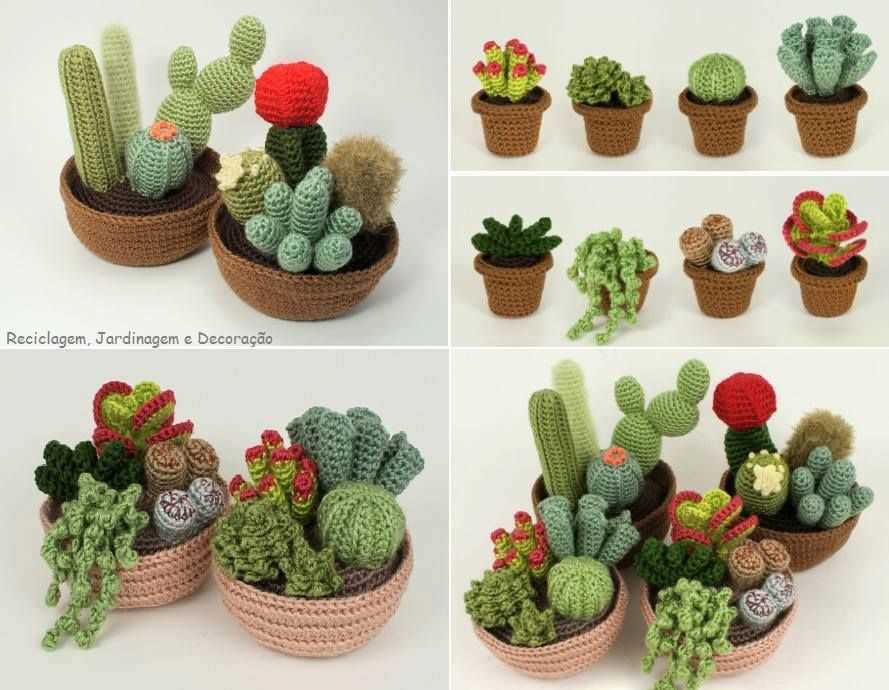
For knitters who enjoy colorwork, the Colorwork Succulent Sweater is a perfect choice. This pattern combines various colors to create a vibrant succulent pattern on a sweater. With stranded knitting and careful color placement, this pattern allows you to create a unique and eye-catching sweater that showcases your knitting skills. The pattern includes color charts and detailed instructions for knitting the colorwork design.
These advanced succulent knitting patterns offer a challenge for experienced knitters and the opportunity to create intricate and stunning succulent-themed designs. Whether you choose to knit a delicate lace shawl, intricate cabled socks, or a vibrant colorwork sweater, these patterns will push your skills and result in beautiful finished pieces that showcase your love for both knitting and succulents.
Tips for Adding Texture to Your Succulent Knitting
When it comes to knitting succulents, adding texture can take your project to the next level. Texture not only adds visual interest but can also make your finished piece look more realistic and lifelike. Here are some tips to help you add texture to your succulent knitting:
1. Experiment with Different Stitch Patterns: One of the easiest ways to add texture to your succulent knitting is by experimenting with different stitch patterns. You can try using ribbing, cables, bobbles, or even lace stitches to create different textures and patterns within your knitted succulents.
2. Use Different Yarns: Another way to add texture is by using different types of yarns. You can opt for yarns with more texture, such as boucle or slub yarns, which can give your succulent knitting a more realistic appearance. Additionally, you can try combining different yarns in one project to create interesting texture combinations.
3. Add Embellishments: Adding embellishments to your succulent knitting can also create texture. You can sew on beads, buttons, or sequins to mimic the look of dewdrops or flowers. Additionally, you can use embroidery techniques to add small details like veins on the leaves or tiny flowers to enhance the texture of your knitted succulents.
4. Incorporate Different Shades and Colors: Playing with different shades and colors of yarn can add depth and texture to your succulent knitting. by using variegated yarns or blending different shades within your project, you can create a multi-dimensional look that enhances the texture of your knitting.
5. Consider Adding 3D Elements: To truly bring your succulent knitting to life, consider adding 3D elements. You can create small pom-poms or tassels to mimic flower buds or use wire to shape stems and leaves. These additional elements will not only add texture but will give your knitted succulents a more realistic appearance.
By following these tips, you can enhance the texture of your succulent knitting and create beautiful, realistic-looking pieces. Experiment with different techniques and have fun adding texture to your knitted succulents!
Exploring Colorwork Techniques in Succulent Knitting
Colorwork is a popular technique in knitting that involves using multiple colors of yarn to create intricate patterns and designs. When it comes to succulent knitting patterns, colorwork can add depth and visual interest to the finished project. By incorporating different colors and using various colorwork techniques, knitters can create stunning pieces that capture the beauty and diversity of succulent plants.
One colorwork technique that works well with succulent knitting patterns is stranded knitting, also known as Fair Isle knitting. This technique involves carrying two different colored yarns across the row, creating a pattern on the right side of the work. The contrasting colors can be used to highlight different parts of the succulent design, such as the leaves and flowers. Stranded knitting allows for endless possibilities when it comes to color combinations, making each succulent project unique and eye-catching.
The use of intarsia can also be incorporated into succulent knitting. Intarsia is a technique that involves knitting with different colors of yarn, but instead of carrying the unused colors across the row like in stranded knitting, separate bobbins or balls of yarn are used for each individual color block. This technique is particularly useful when working with larger areas of color, such as larger succulent leaves or flower petals. By using intarsia, knitters can create precise and defined color blocks, resulting in a more realistic depiction of succulent plants.
Another colorwork technique that can be used in succulent knitting is duplicate stitch. Duplicate stitch involves using a contrasting color of yarn to embroider a pattern or design onto the finished knitted fabric. This technique is especially useful for adding small details or accents to a succulent design, such as the veins on a leaf or the stamen of a flower. Duplicate stitch allows for precise and intricate colorwork, making it a great addition to any succulent knitting project.
- Stranded knitting
- Intarsia
- Duplicate stitch
Creating Unique Succulent Patterns with Cable Knitting
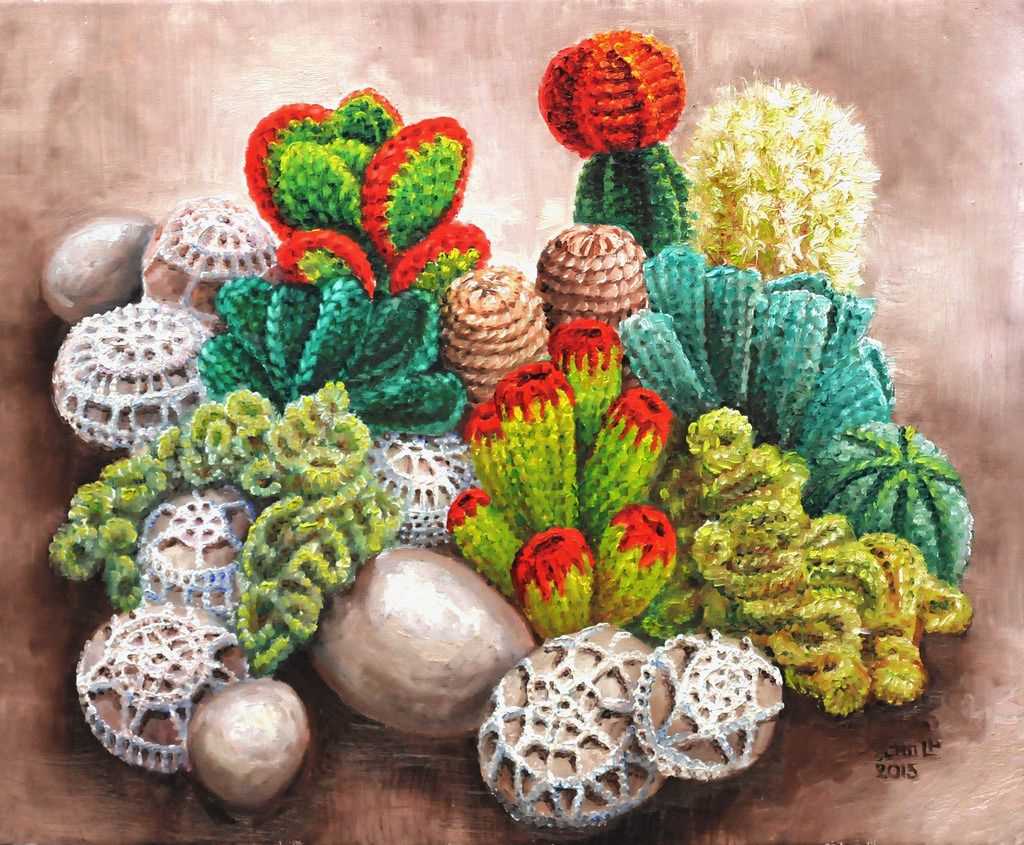
Cable knitting is a technique that involves crossing stitches over each other to create intricate and textured patterns. When combined with the beauty and diversity of succulent plants, cable knitting can produce stunning and unique designs that capture the essence of these beloved plants.
One of the key elements of cable knitting is the use of a cable needle, which is used to hold stitches temporarily while others are worked. By manipulating the stitches on the cable needle, knitters can create twists and braids that resemble the leaves and stems of succulents. These patterns can range from simple cables that mimic the lines of a succulent leaf to more complex designs that incorporate multiple cables to create intricate textures.
For example, a popular succulent knitting pattern is the “Succulent Garden Cable Cowl.” This pattern features a series of interlocking cables that form the shape of succulent plants, complete with leaves and stems. The cables are arranged in such a way that they create a three-dimensional effect, giving the impression that the succulents are growing right off the fabric.
Another unique cable knitting pattern inspired by succulents is the “Succulent Lace Cardigan.” This pattern combines delicate lace stitches with cable stitches to create a stunning garment that resembles a succulent in full bloom. The lace stitches create an airy and lightweight fabric, while the cables add depth and structure to the design.
In conclusion, cable knitting offers endless possibilities for creating unique and beautiful succulent patterns. Whether you prefer a simple cable design or a more intricate combination of lace and cables, these patterns capture the beauty and diversity of succulents in a truly special way. So pick up your cable needle and start exploring the world of succulent-inspired knitting!
Finishing Touches: Blocking and Embellishing Your Succulent Knits
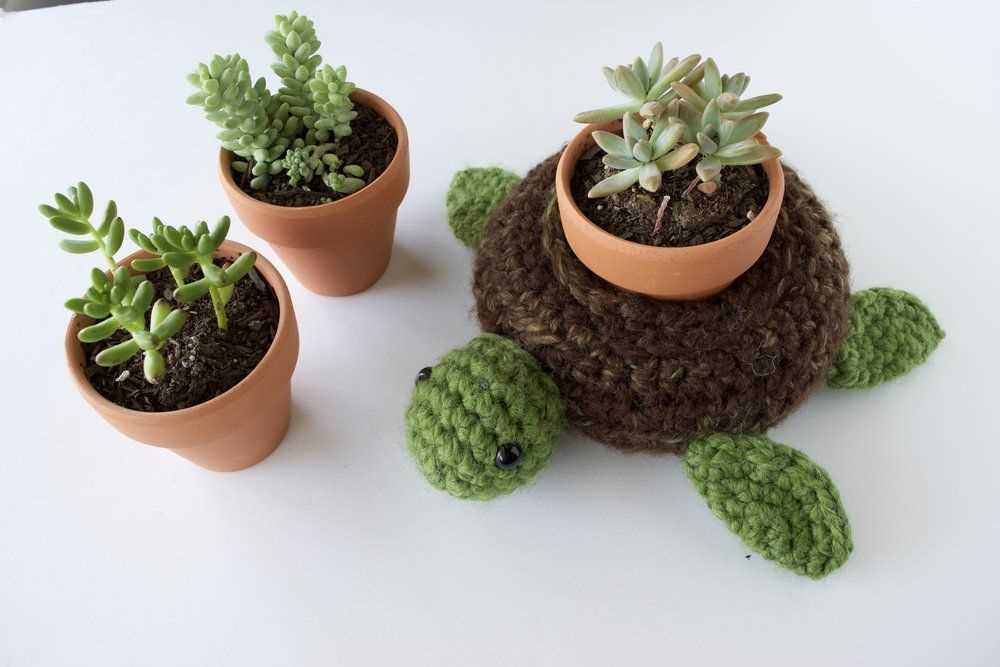
After putting in all the effort to knit your succulent-inspired pattern, the final step to truly make your project shine is blocking. Blocking is a process that involves gently wetting your knitted piece and reshaping it to the desired dimensions. This step helps smooth out any uneven stitches, even out the tension, and give your knits a polished, professional look.
When blocking your succulent knits, it’s important to consider the fiber content of your yarn. Natural fibers like wool or alpaca may require a more gentle blocking technique, while synthetic fibers like acrylic can tolerate a more aggressive approach. Always check the care instructions for your yarn to ensure you choose the appropriate method.
Once your knitted piece is blocked and dry, it’s time to embellish and bring your succulent design to life. You can add embroidered details using different colored yarns to create the intricate patterns and textures of succulent leaves. Stitching on French knots or beads for the centers of flowers can add an extra dimension to your design.
Another way to enhance your succulent knits is by using appliqué techniques. Cut out small leaf shapes from felt or fabric that matches the colors of your knitted piece and sew them onto your project. This will give your knits a realistic look and make them truly stand out.
To keep your succulent knits looking fresh and vibrant, it’s important to take care of them properly. Avoid throwing them in the washing machine and instead, hand wash them in cool water with a mild detergent. Lay them flat to dry to maintain their shape and prevent stretching. With proper care and attention to detail, your succulent knits will be a unique and eye-catching addition to your wardrobe or home decor collection.
Showcasing Your Succulent Knitting Creations
After spending time crafting beautiful succulent knits, it’s time to showcase your creations and share them with the world. Whether you’re looking to exhibit your work in a gallery, sell your knitted succulents online, or simply showcase them in your home, there are various ways to display and share your unique designs.
One option is to create a visually appealing display in your home. Consider arranging your knitted succulents on a shelf or in a handmade terrarium to create a mini succulent garden. You can mix and match different types of succulents and experiment with different colors and textures to create an eye-catching display. Additionally, you can use props such as small pots, rocks, or mini garden tools to add an extra touch of authenticity to your display.
If you’re looking to share your work with a larger audience, consider exhibiting your knitted succulents at local craft fairs or art exhibitions. This can be a great way to connect with other artists, meet potential customers, and gain exposure for your creations. Make sure to properly label each piece with your name and contact information so that interested buyers can easily reach out to you.
Social media platforms such as Instagram and Pinterest can also be powerful tools for showcasing your succulent knitting creations. Create an account dedicated to your knitted succulent designs and regularly post high-quality photos to attract a following. Use relevant hashtags and engage with other users who have similar interests to increase the visibility of your posts. You can even consider collaborating with influencers or participating in knitting challenges to increase your reach and connect with a larger community of knitting enthusiasts.
In conclusion, showcasing your succulent knitting creations can be a rewarding experience. From creating a stunning display in your home to exhibiting at craft fairs or sharing on social media, there are numerous ways to display and share your talent. Remember to be proud of your work and enjoy the process of showcasing your unique knitted succulent designs.